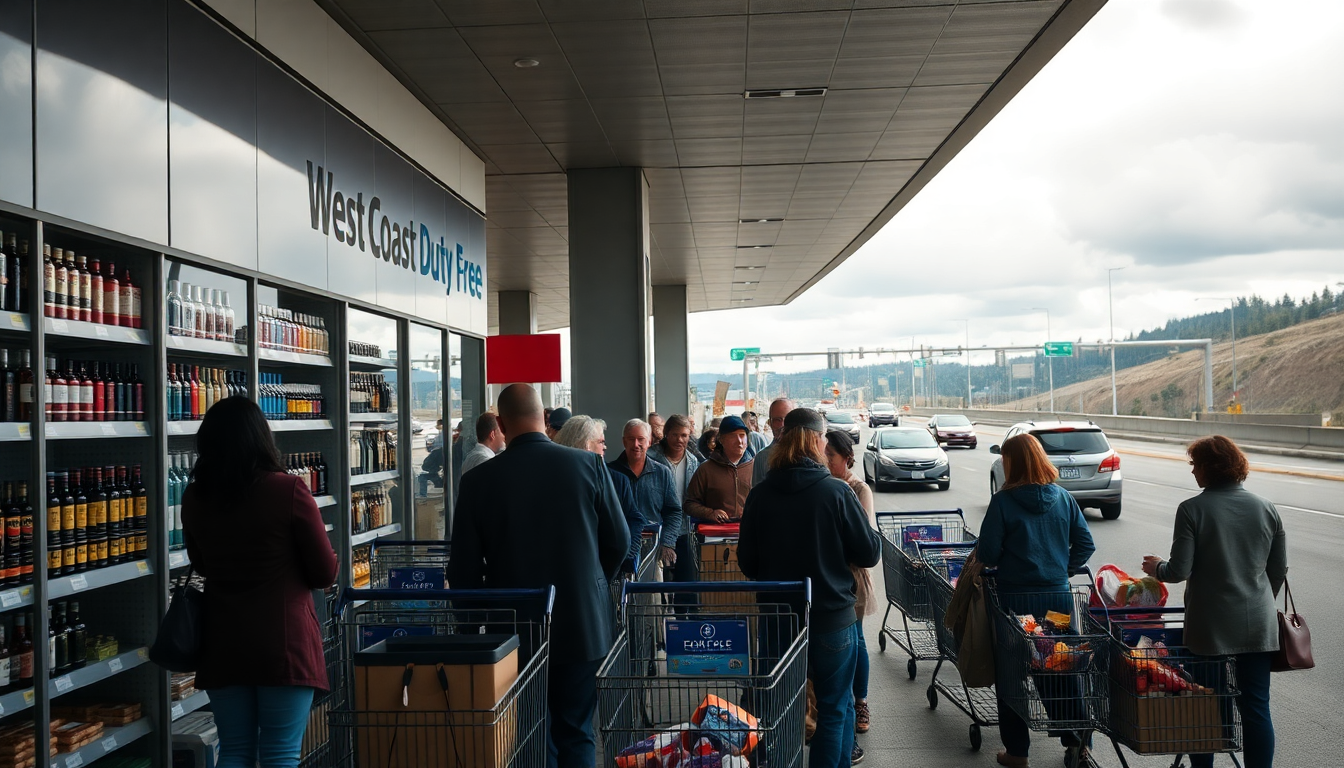Table of Contents
As the global economy continues to navigate the turbulent waters of trade tensions and travel restrictions, cross-border retail businesses find themselves at a critical juncture. Have you ever wondered how retail stores manage to thrive when the world around them is shifting so dramatically? The recent experiences of West Coast Duty Free at the Pacific Highway border crossing highlight the profound challenges these retailers face, underscoring the need for strategic adaptation to survive in a rapidly changing market.
The Current Landscape of Cross-Border Retail
Gary Holowaychuk, co-owner of West Coast Duty Free, has some serious concerns about the significant decline in customer traffic. On a typical sunny afternoon, his store would expect to see 40 to 50 customers; however, recent figures reveal a staggering drop of 70 to 80 percent from those expected numbers. This sharp decline isn’t just a passing fad—it’s a stark reflection of the broader economic challenges that have emerged following the COVID-19 pandemic and ongoing trade disputes. How can retailers bounce back from such a hit?
Looking back to early 2024, sales seemed promising with an increase of 30 to 40 percent in January and February. But as March rolled around, things took a nosedive, with sales plummeting by approximately 25 percent. With foot traffic down by 45 to 55 percent since the onset of spring, the outlook for duty-free retailers is looking pretty grim, especially those who depend heavily on cross-border travel.
To make matters worse, the recent announcement of a 35 percent tariff on Canadian goods by U.S. President Donald Trump feels like a gut punch for retailers who are already struggling to keep their heads above water. It’s a tough environment for anyone trying to maintain profitability amidst declining sales.
The Impact of Economic Policies on Retail Dynamics
The implications of these economic policies extend far beyond immediate sales figures. Statistics Canada reported a 33 percent decrease in Canadians crossing the border by car in June compared to the previous year. With numbers like these, the long-term viability of many border businesses is hanging by a thread. Retailers like Holowaychuk’s are left grappling with dwindling customer numbers and a looming threat of closure without some serious intervention.
In light of these challenges, Holowaychuk is advocating for government support to help level the playing field for businesses. He’s calling for legislative changes that could improve competitiveness and ensure that retailers can weather this storm of economic uncertainty. The urgency of such measures cannot be overstated; many border stores face the risk of closure if the summer tourist season fails to deliver the necessary foot traffic. Do you think the government will step up?
Financial losses are already piling up, with West Coast Duty Free reporting a staggering loss of $100,000 in just one month. This isn’t just a number—it’s a clear indication of the pressing need for strategic action and support to ensure these businesses can survive through the winter months ahead.
Looking Ahead: Strategies for Resilience
Despite the current landscape, there’s a flicker of cautious optimism. Holowaychuk is hopeful that the summer months will yield better results as travel picks up. But with the uncertainty surrounding economic policies and consumer confidence, that optimism is complicated. Retailers need to stay agile and proactive in their strategies to adapt to these unpredictable market conditions. What strategies do you think would work best?
In conclusion, the future of cross-border retail hinges on a blend of consumer behavior, government policies, and the ability of businesses to adapt to a constantly changing landscape. As the market evolves, retailers must focus on innovative strategies that not only tackle immediate challenges but also set them up for long-term success. By fostering resilience and seeking support where needed, cross-border retailers can navigate these turbulent times and emerge stronger on the other side. Are you ready to see how they’ll adapt?


